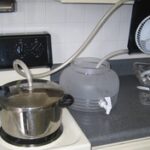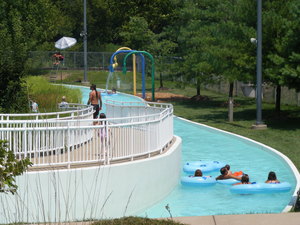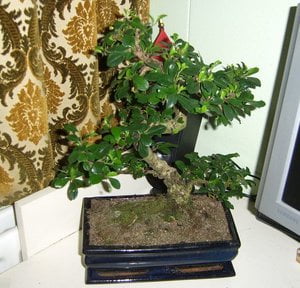Where does nature hide her gold, and how can you find these hiding places and harvest some of this golden treasure for yourselves? First the type of gold we are seeking is called “placer” (the “a” sounds like the “a” in “plastic”.) Placer gold is gold that nature has released from the rock it came encased in.
Geologists say that “lode” gold or gold found in the rocks where it formed millions of years ago came about when high pressure deep within the earth forced very hot water, gold and other liquid rocks and metals up through fractures in the earths crust where it slowly cooled and hardened into solid rock, usually of the quartz family, though gold may be found in almost any kind of rock. Most of the visible gold is found in quartz, visible gold is gold that can be seen by looking at it with your eyes, most of these deposits have been found and mined in the U.S. today.
The lode gold being mined today is on the microscopic side, you will need a microscope to see it in the rock it is a part of. One quarter to one half ounce of gold per ton of rock will give a profit if the deposit is large enough, but it costs hundreds of millions of dollars to get set up to mine one of these deposits as they are usually far from civilization deep in the wilderness. Roads must be built to carry all the men and supplies needed to mine these deposits and many environmental hurdles must be overcome before the first ounce of gold is mined. From the time the gold deposit is discovered until mining commences is usually about nine to ten years. This is best left to the giant multinational mining company’s as they are the only ones who can afford the costs associated with lode mining today.
So if you or I want to mine some gold today and we usually don’t have five or six hundred million laying around to mine lode gold, what should we do? Search for placer gold! First you have to find a stream or river that has gold deposits. The best way to do this is look up the records of where gold was found in the past and start there. Gold deposits are constantly being replent-ished when heavy rains wash gold down from where it weathered out of the rocks it was formed in. Nature is constantly wearing down mountains and as this happens more gold is slowly working its way into the streams and rivers.
Fall rains fill cracks in the gold bearing rocks and when winter freezes come the water expands as it freezes and cracks the rocks and eventually cracks off pieces of the rock which are washed down the sides of the mountain, as they tumble down the mountain they hit other rocks and are broken into smaller and smaller pieces, this releases the gold particles that had been formed in the host rock. Eventually this is washed into the streams and rivers where we look for it.
Gold is very heavy, usually about eighteen times as heavy as water and six times as heavy as the rock it was found in. As it is washed downstream it slowly works its way to the bottom of the waterway that is carrying it downstream. The gold found by the original prospectors had millions of years to accumulate and stream placers were very rich, in today’s money billions of dollars of placer gold was found. Today most of
these placers have been found and cleaned out. In the beginning prospectors with nothing but gold pans got rich because of the richness of the placers, but as the rich placers were worked out, men had to work areas that had less and less gold and the gold pan just was not efficient enough to make low grade deposits pay them enough to live on.
So the sluice box was born, since gold is so heavy it gets hung up in bottom features of the river, men
made long boxes that were twenty or so feet long, three feet high and had two inch square pieces of wood nailed cross way along the length of the box. These crosspieces or riffles caught the heavier gold and let the water wash all the lighter materials through and back into the river. Now prospectors let the river run down the sluice and catch the gold with much more efficiency and low grade deposits could be worked at a profit. Today modern sluice boxes are made of light weight aluminum or plastic and are easily carried
from place to place by modern prospectors.
Gold is moved down the river when it floods, the larger the flood the more gold is moved. As it moves downstream gold gets hung up in predictable places. This is where we tend to find it. First before you bring your sluicebox, you need to find a deposit or placer where there is enough gold to justify the time and effort you are going to exert to retrieve it. You don’t want to shovel ten tons of rock and gravel and then find out you only have twenty dollars to show for your efforts. That’s why they call it prospecting,
we are prospecting or looking for a spot that has enough gold to make our effort worthwhile.
Prospecting usually starts with a gold pan, and the miner panning out gravels and dirt from the likely places in the river where gold falls out of the current when the flooding river starts to subside and the
current is no longer strong enough to carry the gold downstream any longer. Gold being heavier than anything else slowly works its way down to bedrock ( the solid rock at the bottom of the river ) and works its way downstream until it falls into a crack in the rock, a hole in the river bottom or gets hung up and can no longer move downstream. Likely places are on the inside of bends, behind big rocks or places where the bottom is uneven and has places for the gold to get stuck. Anywhere lots of rocks are concentrated
is another good place to look, as the current lessened and these rocks stopped their downstream movement, gold will also drop out here.
Where you find gravel bars is another good place to look as this is where gravel and sand out of the current. Most gold will be found on bedrock or in the first few inches of gravel above bedrock. Don’t waste your time working the gravel bars themselves, shovel away the overburden ( the sand and gravel
on top of the bedrock ) and work only the few inches of material on top of the bedrock. When you find a place that workable amounts of gold, that is the time to bring in your sluice box to be able to work the deposit efficiently.
Some prospectors who are in it for fun may be happy working all day for just a small amount of gold dust, while others who want to make a living at mining may need to recover several hundred dollars a day for them to be able to make a living at this wonderfully exciting game of gold prospecting.





